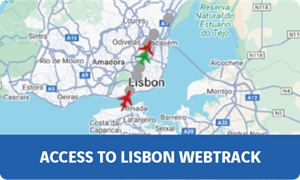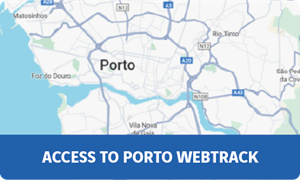Environment
Noise
Gestão da água
A continuously operating Noise Monitoring System was implemented at ANA airports with the aim of monitoring and controlling noise levels, focusing particularly on the noise generated by aircraft. This system is in operation at Humberto Delgado Airport (Lisboa), Francisco Sá Carneiro Airport (Porto), Gago Coutinho Airport (Faro) and Madeira Airport.
Noise is part of a priority strategic area under the scope of ANA’s environmental management. The plans to minimise the impact of airport infrastructure noise take different forms, requiring a holistic approach covering the source, reception areas and transmission paths. An optimal solution requires the combination of as many alternatives as possible in order to effectively minimise the effects of noise on the neighbouring community, ensuring affordable costs through the rational use of resources, in accordance with the “balanced approach” principle widely recommended by the EU.
Bearing in mind the principle of continuous improvement, the minimisation of negative impacts is a permanent challenge, and control and monitoring are crucial tools for the pursuit of this objective.
Humberto Delgado Airport has six fixed monitoring stations and two stations on the airport perimeter for checking use of the engine braking procedure. Francisco Sá Carneiro Airport, Gago Coutinho Airport and Madeira Airport are equipped with three fixed stations each. The monitoring is complemented by one portable station at each airport in order to enable analyses to be carried out in places not covered by the fixed stations, or in response to any complaints made. A portable station is used for continuous monitoring at Porto Santo Airport
In the specific case of João Paulo II Airport, the Noise Monitoring Reports are prepared by an external laboratory, based on monitoring campaigns carried out per IATA period.
Simulations/forecasts are also carried out through the regular preparation of Noise Maps which characterise the acoustic environment around larger airports, where more significant impacts regarding aircraft-specific noise are more likely to occur.
To this end, Noise Maps are drawn up for Humberto Delgado Airport, Sá Carneiro Airport, Gago Coutinho Airport and Madeira Airport. They are also prepared for Porto Santo Airport, as these are integral parts of the airport’s noise monitoring reports for that airport. Real data associated with aircraft movements during the reference periods are used, thus ensuring higher accuracy in the results obtained. These are preceded by validation using the results from the continuous noise monitoring stations installed in and around the airport.

Information on aircraft movements
ANA, through the WebTrak tool, provides operational and acoustic information associated with aircraft movement of Humberto Delgado Airport (Lisbon) and Francisco Sá Carneiro Airport (Porto), in a reliable and transparent way.
For security reasons, information relating to military activity is not disclosed, as the application is exclusively for civil aviation. Also, for the same reason, the information is displayed with 30 minutes delay, compared to the current operation. One month of historical data is available.
This application processes radar data from NAV - Navegação Aérea de Portugal, EPE, allowing the identification of each type of operation - landing, take-off, overflight - with the trajectories represented according to a color code - red, green, gray - respectively. It provides information such as: flight number, aircraft type, altitude, and flight origin.
The acoustic information is based on data from the Noise Monitoring Stations (NMS) of ANA - Aeroportos de Portugal, strategically installed in the airport surroundings, and accreditation issues of the acoustic tests are guaranteed in light of the legislation in force. The noise levels shown correspond to the instantaneous records of the NMS, resulting from all noise sources, that is, the ambient noise. This consists, therefore, in the sum of particular noise (associated with aircraft passage, if any) and residual noise (associated with other noise sources, for example, road traffic, urban areas, etc.). The instantaneous noise is not comparable with legal limits in force, as the latter refer to average values (in a representative period), calculated as defined in General Noise Regulation.
If you have difficulty accessing WebTrak, please contact: WebTrak@envirosuite.com
If you have any questions on WebTrak usage, please contact our Environment and Sustainability area: geral.ambiente@ana.pt
Noise
-
1. Noise, what is it?
Noise is an audible manifestation of mechanical vibrations in a physical, elastic medium, like air. The vibrations heard by the human ear are a sound signal with different physical parameters, the main ones being the intensity and frequency of the sound.
-
2. How is noise measured?
Sound levels are measured in decibels (dB), on a logarithmic scale, where 0 dB is considered to be the "threshold of hearing" (the minimum noise a human being is capable of hearing) and 120 dB is the "threshold of pain" (the level from which the human ear begins to suffer physical damage.)
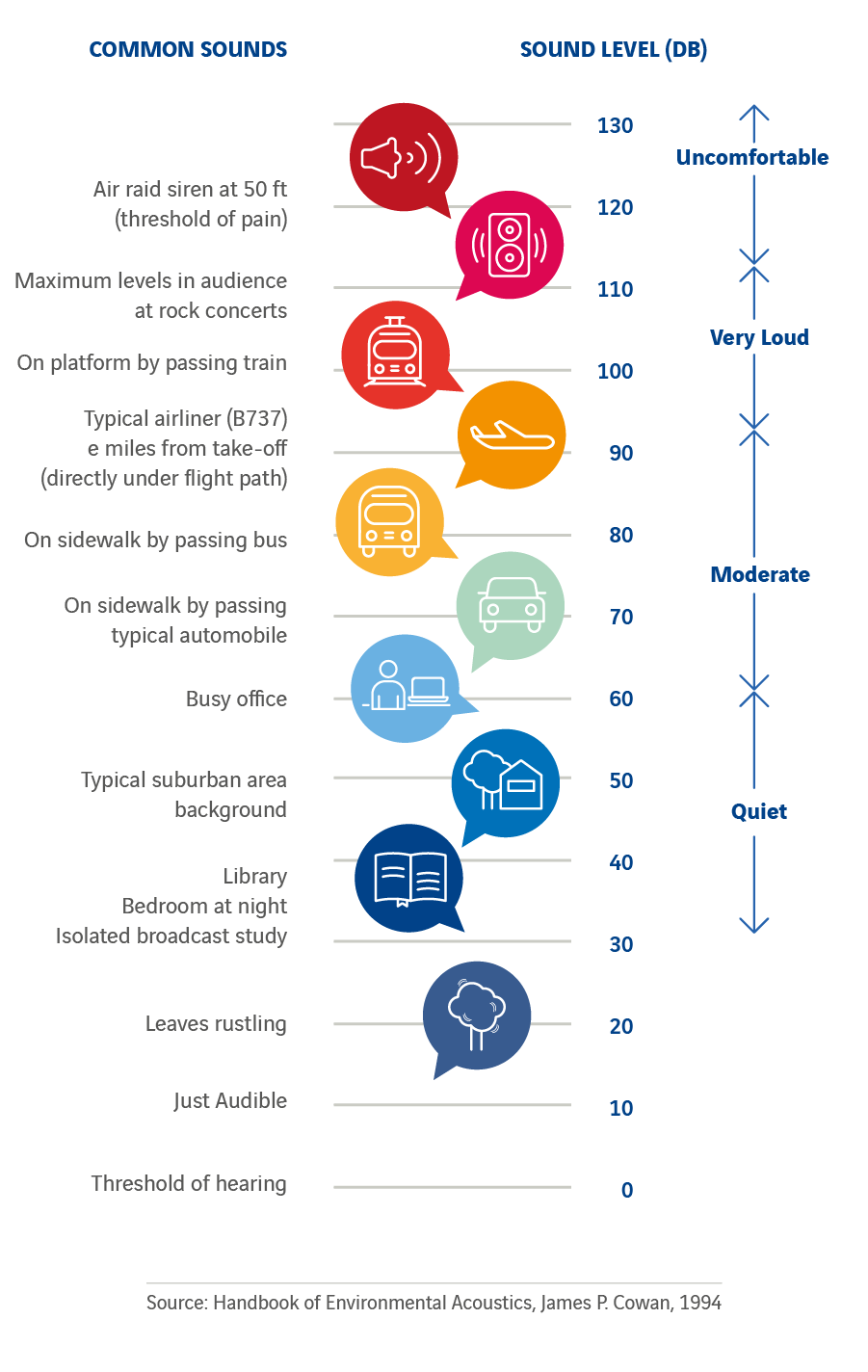
-
3. What is a decibel?
The decibel, dB(A) or dBA, is the level of sound pressure (intensity) at which human beings can actually hear a certain noise.
-
4. What equipment do we use to measure noise levels?
All ANA airports have noise monitoring systems, consisting of monitoring stations (microphone, sound level meters and weather stations), distributed along the runway approach areas.
The measurement of noise levels follows strict procedures, and the acoustic testing is accredited according to the legal regulations in force.
Through this system, it is possible to distinguish total environmental noise (sum of all sound sources) from a particular noise (in this case, associated with aircraft), and residual noise (environmental noise minus the particular noise).
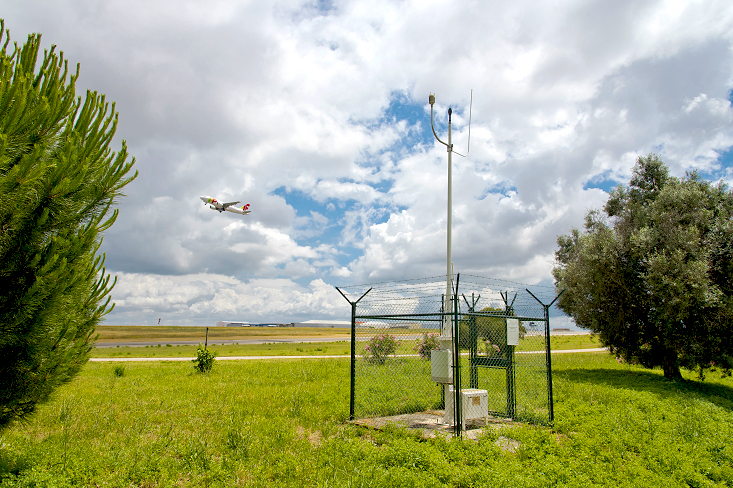
-
5. Can I accurately measure noise levels using mobile phone apps?
No. No mobile phone is properly calibrated for this, so the results will almost always be inaccurate. In addition, there are specific measuring procedures which are in accordance with legal (and physical) requirements to ensure their accuracy. It should be added that it is also essential to be able to distinguish particular noise in order to be able to effectively measure its contribution in relation to total environmental noise (sum of all noise sources). Otherwise, we would simply be measuring the sum of all noise sources without understanding the specific contribution of the planes.
In the same way, when using mobile phone apps, the noise that is normally measured is what is called instantaneous noise, where, in terms of the applicable legal requirements, what is used is an integration of specific noise indicators for a certain time. Therefore, comparison exercises are not possible
-
6. How are legal noise limits defined?
According to the General Noise Regulation, legal noise limits are established for two different indicators – the entire day and the night-time period.
In either case, they refer to total environmental noise (sum of all sound sources). Therefore, the maximum noise limits set by law do not directly correspond to a level of particular noise, such as from an aircraft, but rather a set of different noises in the city.
-
7. What causes aircraft noise?
Aircraft noise is produced in ground and air operations and comes from two main sources - the airframe and the engine.
The noise from the airframe is caused by the passage of air over the plane's airframe. The amount of noise depends on the type of aircraft, the speed it is travelling at and its flight configuration. For example, when approaching the runway, the aircraft produces more air resistance caused by drag when the landing gear is lowered, creating more noise than if the landing gear was up and housed in the fuselage.
In the same way, the use of flaps (a system of movable panels on the aircraft wings which allows lift to be increased at lower speeds) when landing, increases the aerodynamic noise because it generates more of a drag effect on the air mass.
Engine noise is the main source of the noise generated by aircraft. It is more intense at take-off given that more acceleration is needed to enable take-off.
-
8. Why do I hear aircraft noise?
You will normally hear aircraft noise because:
_you live or work near an airport.;
_you live or work near a take-off or landing route;
_you live or work near an air traffic holding area.
-
9. Do aircraft have acoustic certification?
Yes. All aircraft are certified according to the levels of noise they emit, bearing in mind the certification standards determined by the International Civil Aviation Organisation (ICAO). In the airports managed by ANA – Aeroportos de Portugal, this certification determines the time slots when these aircraft can operate.
-
10. Why do some planes seem to be louder than others?
In airports, particularly international ones, aircraft with a wide range of noise levels operate, from smaller aircraft, many of them propeller-driven, called “general aviation”, to commercial aircraft, in a variety of sizes. The impact of aircraft noise depends mainly on the type of engine used, the size of the aircraft and its flight trajectory (take-off or landing).
-
11. Why do some planes seem to be louder at night than during the day?
This is mainly due to the fact that there is less ambient noise in the area around the airport. Ambient noise levels during the day tend to be louder than at night (more road and rail traffic, construction and industry noise, for example). In contrast, aircraft noise appears to be more intense in the relative silence of night.
-
12. Why do the planes take off from one runway sometimes and from another at other times?
The choice of aircraft take-off direct depends on the weather conditions at the time, particularly the direction of the wind. For greater safety, all aircraft should take off and land into the wind. So, you can say that the choice of runway is always “where the wind takes you”.
Each runway ends up having a dual function, as if it were two. Let's take the example of Runway 02/20 in Lisbon (02 – North and 20 - South), where the prevailing wind is from the north. In order to land into the wind, you have to land from south to north. If the wind changes direction, the runway changes too (it becomes 20/02) and the aircraft make their approach and land from north to south. Stormy weather conditions or low visibility (LVO – Low Visibility Operations) also determine the approach route to the runway and landing, due to the location of the ILS (Instrument Landing System) systems required for operations such as these. Generally speaking, as take-off is the operation that emits higher levels of noises, residents in the areas around the north and south of the city will notice these differences in the intensity of the sound emitted.
-
13. Why can't planes fly over other areas?
In order to ensure aviation safety, the airspace around airports is strictly regulated. Airspace has countless “invisible roads” where the aircraft can operate, air traffic control areas, in the form of a corridor and routes, where the aircraft travel as if they were following the lanes on a motorway. They are defined corridors that link a certain place to another, at each specific altitude. Portuguese airspace has countless transit routes, with aircraft merely flying along them to other countries, without constituting sound that is considered noise. In the area immediately around airports, due to the short distance and low altitude, aircraft must always be positioned in alignment with the runway and they cannot travel outside that alignment. This is why airports with a lot of air traffic often have an aircraft spending a few minutes circling at high altitude, in “holding corridors”, until it's their turn to approach the runway and land.
-
14. What kind of measures can be put in place for noise management?
The strategies for minimising the impact of airport infrastructures, particularly in terms of noise, can take on different forms and use different solutions. Noise can be reduced by acting on three areas:
a) the noise source;
b) the places where it's felt;
c) and the sound propagation routes (sometimes “diverting” the noise so that it doesn't get to areas of higher population density, for example).
It is very rare for there to be only one solution. The optimisation of solutions almost always implies the best combination of the largest number of possible alternatives, minimising the effects of the noise on the neighbouring communities, safeguarding operating and safety conditions, assuring affordable costs through a rational use of resources and always bearing in mind the “balanced approach” principle, which is widely recommended in the European Union.
In this context, Action Plans have been defined for the Reduction of Noise from Large Air Transport Infrastructure located near the largest urban centres in the country, namely:
Lisbon Airport Noise Reduction Action Plan
Porto Airport Noise Reduction Action Plan
As the Action Plans associated with Large Airport Transport Infrastructure are regulated by the applicable legal provisions and noise management involves all the remaining airport facilities, measures have been put in place aimed at controlling and minimising the environmental impacts associated with noise emissions from their activities and implemented in all the airports.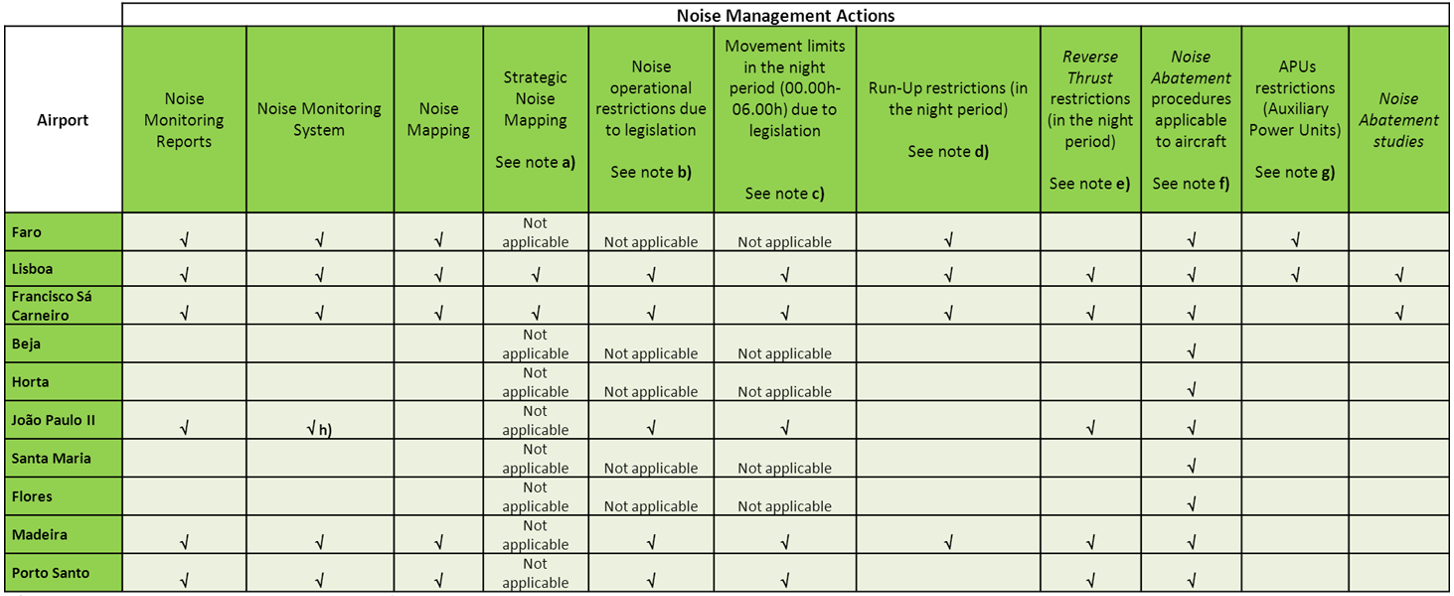
a) Arising from the provisions of Decree-Law No. 146/2006, of 31 July, with the amendments introduced by Decree-Law No. 136-A/2019, of 06 September
b); c)
In accordance with Order No. 303-A/2004, of 22 March, with its subsequent amendments, for Lisbon Airport
In accordance with Decree-Law No. 293/2003, of 19 November, for Lisbon Airport
In accordance with Order No. 831/2007, of 01 August, for Francisco Sá Carneiro Airport
In accordance with Regional Order No. 88/2010, of 09 September, for João Paulo II Airport
In accordance with Regional Order 69/ 2007, of 13 July, for Madeira Airport
In accordance with Regional Order 70/ 2007, of 13 July, for Porto Santo Airportd); e); f); g) As published in AIP- Portugal (Aeronautical Information Publication)
h) Through monitoring campaigns per IATA period
-
15. Can planes operate at night?
The airports that can operate at night, according to operational restrictions, are identified in specific legislation. There are operating restrictions in terms of the type of aircraft and maximum number of flights permitted for the period between midnight and 6 am for Humberto Delgado Airport - Lisbon, Francisco Sá Carneiro Airport - Porto, Madeira Airport, Porto Santo Airport and João Paulo II Airport – São Miguel, Azores.
-
16. How many flights can operate at night (midnight to 6 am) at Humberto Delgado Airport - Lisbon?
In the specific case of Lisbon, up to 91 flights are permitted per week. However, there may not be more than 26 flights per night. This scope does not include, for example, state, military, emergency or turboprop flights, given that these flights are of maximum necessity and/or minimum disturbance, according to the legislation in force.
And in Porto?
The maximum number of flights permitted during this period is 11 daily flights, 70 weekly and 2100 per year.
And in Madeira and Porto Santo?
In Madeira, the number of commercial flights per week may not exceed 80, with a maximum of 31 flights per day. Porto Santo cannot exceed 7 flights per week, with a maximum of 3 flights per day.
And at João Paulo II Airport in the Azores?
There may not be more than 30 flights per week, with a maximum of 6 flights per day.
-
17. Are there any exceptions to the night-time operating restrictions?
Yes. Bearing in mind specific and exceptional conditions, deemed to be force majeure, there are no restrictions on flights under the following general conditions:
a) aircraft carrying out humanitarian missions, for medical emergencies or evacuations;
b) aircraft in emergency situations, due to weather conditions, technical failure or flight safety;
c) flights which have required an unforeseen schedule change due to abnormal disruption in air traffic control;
d) flights up to 1 am scheduled for periods up to midnight, due to delays not the fault of the airport management body or the carrier;
e) flights to and from the Autonomous Regions of Madeira and the Azores, due to weather conditions;
f) landings made during the period between 5 am and 6 am, due to weather conditions, provided the arrival had been scheduled for after 6 am.
Adaptations of a local nature are defined in the applicable legislation, particularly for the airports in Madeira, Porto Santo and João Paulo II, São Miguel – Azores.
-
18. Why is Humberto Delgado Airport in Lisbon practically in the middle of the city?
Lisbon Airport was built in 1942, at a time when the entire area, including the surrounding land, was 100% rural. Lisbon City, as it was at the time, was far away from the airport. There are records that the discussions around its location in 1929 had supporters in favour of Portela, Sacavém and Campo Grande, on the city limits at the time. With the growth in population and urban expansion, new residential neighbourhoods came closer and closer to the airport, finally surrounding it completely.
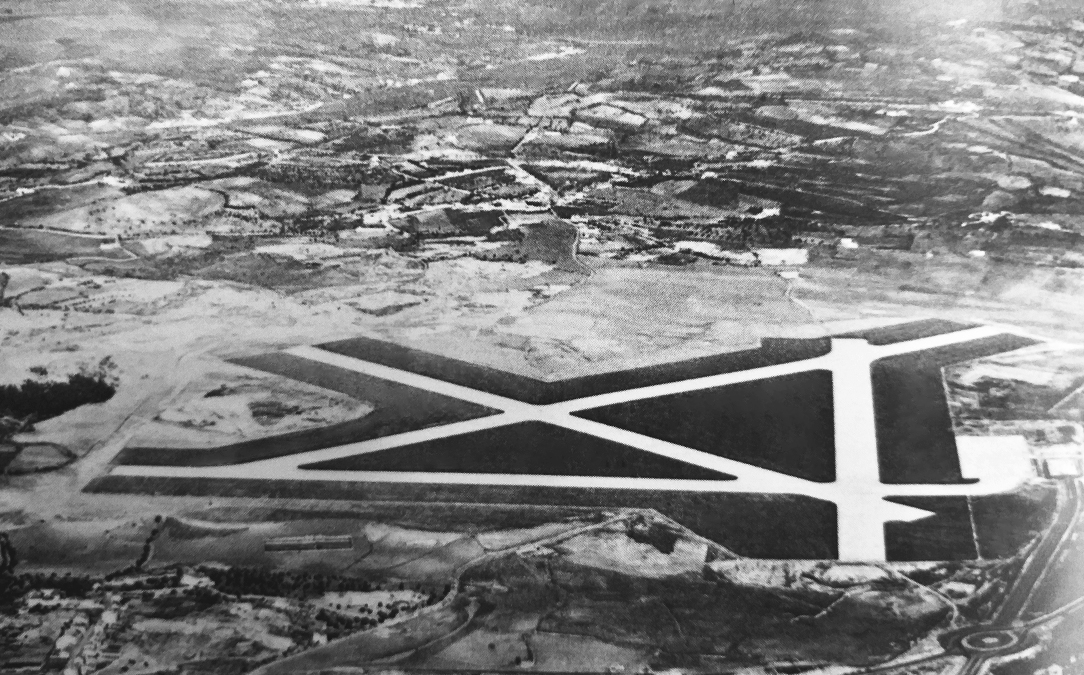
Lisbon Airport Nice trips
Lisbon Airport Nice trips
Lisbon Airport Nice trips
Lisbon Airport Nice trips
Lisbon Airport Nice trips
Lisbon Airport Nice trips
Lisbon Airport Nice trips
Lisbon Airport Nice trips
Lisbon Airport
Site map
Flights & Destinations
Destinations
- Atenas
- Atenas
- Athens
- Birmingham
- Birmingham
- Birmingham
- London Gatwick
- Londres Gatwick
- Londres Gatwick
- Londres Heathrow
- Londres Heathrow
- London Heathrow
- Londres Luton
- Londres Luton
- London Luton
- Londres Stansted
- London Stansted
- Londres Stansted
- Moscow
- Moscovo
- Moscú
- Santander
- Santander
- Santander
- São Paulo Guarulhos
- São Paulo Guarulhos
- São Paulo Guarulhos
- São Paulo Viracopos
- São Paulo Viracopos
- São Paulo Viracopos
- Sofia
- Sofia
- Sofia
- Zagreb
- Zagreb
- Zagrebe
Passenger Guide
Access & Parking
Directions
Getting to and from the Airport
For your full comfort
Services & Shopping
Essencial Services
Premium Services
Shops and Restaurants
Contacts
-
Lisboa

-
Alameda das Comunidades Portuguesas
-
1700-111
-
Lisboa
-
Porto

-
Aeroporto Francisco Sá Carneiro
-
Pedras Rubras
-
4470-558
-
Porto
-
Faro
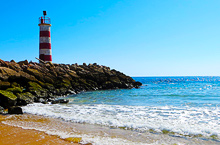
-
Aeroporto de Faro
-
8006-901
-
Faro
-
Beja
-
E.M. 528 - 2, Km 3,3
-
7800-745
-
São Brissos - Portugal
-
Madeira

-
Aeroporto da Madeira
-
9100-105
-
Santa Cruz
-
Porto Santo
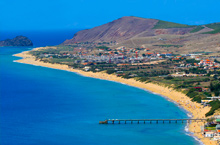
-
Aeroporto do Porto Santo
-
9400-110
-
Porto Santo
-
Ponta Delgada
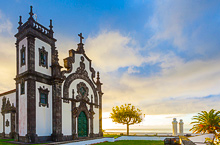
-
Aeroporto de Ponta Delgada
-
9500-749
-
São Miguel
-
Santa Maria
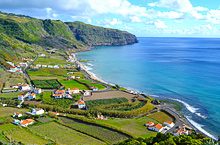
-
Aeroporto de Santa Maria
-
9580-402
-
Vila do Porto
-
Horta
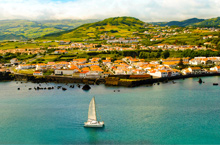
-
Aeroporto da Horta
-
Castelo Branco
-
9900-321
-
Castelo Branco
-
Flores

-
Santa Cruz das Flores
-
9970-320
-
Santa Cruz das Flores
Suggestions & Complaints
Terms and Conditions
TERMS AND CONDITIONS
SERVICE POLICIES
This website is the property of ANA - Aeroportos de Portugal, S.A. (“ANA”). These Service Policies shall govern the relationship between ANA and the user of the website. These policies may be amended whenever deemed necessary by ANA.
If ANA decides to amend these Service Policies, the new version will replace the present one, effective as of its publication date at this website. The relationship between ANA and all users will then be governed by the newly published version.
We advise you to visit this page periodically to ensure that you are aware of the Service Policies in effect. Please also note that ANA reserves the right to change the content of this website at any time.
If the user does not agree with these terms and conditions, they may not continue to use this website or book any services on it.
The purpose of this website is to provide commercial and operational information relevant to users of the Lisbon, Porto, Faro, Madeira and Azores Airports.
PAYMENT METHODS AND SECURITY
The connection to the payment pages of the www.ana.pt website employs a series of security measures and methods to protect our users' personal information. As part of this process, your personal data is encrypted so that it cannot be read by third parties.
The user can choose to pay for any services booked via credit card.
ANA shall not be held liable for any fraudulent, unlawful or abusive use of credit cards or any other payment method. Nonetheless, ANA will not tolerate any actual or attempted fraud or unlawful use of these payment methods.
If ANA discovers that the user has attempted to use an unauthorised means of payment, ANA will ban the user, who will be prohibited from using the services at www.ana.pt. In such case, ANA also reserves the right to take legal action against the user.
Credit Card
Services booked at the website can be paid for using VISA or Mastercard credit cards of which the user is the beneficiary.
Pursuant to new security rules issued by VISA International and Europay/Mastercard International as of 1 April 2001, all authorisation requests to perform transactions using cards from these systems can only be processed by RedUnicre, so long as the security code (CVV2/CVC2) of the respective card is included in the information provided. The security code is a three-digit number printed on the back of the card, after the card number, on the right-hand side of the signature panel of all VISA and Europay cards.
Bookings made via credit card shall be subject to confirmation by RedUnicre. If the request is denied, please contact your bank or the card issuer for further clarification.
MBnet
MBnet is a solution from SIBS – the organisation responsible for the “Multibanco” ATM network – to make payments conveniently and securely at the website www.ana.pt. No credit card is required. Simply sign up for MBnet at an ATM, or via your home banking account.
When you decide to purchase a service, go to the website www.mbnet.pt to generate a credit card number and set the maximum amount of the transaction. When you make the payment, the purchase amount will be debited from your bank account up to this limit. Since it is a virtual card, valid for only one transaction up to the maximum amount in question, using MBnet affords you greater security.
Pricing policy
All prices shown include VAT at the legal rate in force in Portugal.
Exchange rate policy
The currency used to indicate service costs is the euro, and the final purchase shall be made in euros.
CAR PARKING SERVICE
Framework
For the purposes of the booking, the customer agrees to understand and comply with the “Regulations for the Operation and Use of Parking Lots and Drop-Off and Pick-Up Zones at the Airports of ANA, S.A.” (Regulation no.386/2019 of 30 April 2019 on the Operation and Use of Parking Lots and Drop-Off and Pick-Up Zones at Airports, published in the Official Gazette (Diário da República) no. 83, Series II, of 30 April 2019).
Liability
Pursuant to article 27 of Regulation no.386/2019 of 30 April 2019 on the Operation and Use of Parking Lots and Drop-Off and Pick-Up Zones at Airports, published in the Official Gazette (Diário da República) no. 83, Series II, of 30 April 2019, stopping and parking in parking lots and drop-off and pick-up zones shall not constitute a deposit contract for vehicles or any items inside them. As such, ANA and/or its contracted service provider shall not be held liable for any theft, robbery, damage or loss caused by third parties to vehicles, nor shall they have any duty or obligation to guard, preserve and maintain the parked vehicles.
Products and Prices
ANA offers a wide range of car parking options. These options can vary according to the parking lots chosen, and are limited to the number of available parking spaces.
Prices and options per parking lot shown at the website are subject to changes and updates without prior notice.
General Booking Conditions
When making a booking, the customer must correctly fill in the information requested on the form, otherwise it will not be validated by ANA.
Whenever a customer makes a booking, they will receive a confirmation email with the parking voucher and an email with the invoice. You must take a printed copy of the voucher you received and/or a digital version of the QR code with you, and scan it at one of the parking lot's entrance points.
We recommend that you print the voucher in paper format as well, just in case the device fails to scan it (which sometimes happens due to the device’s brightness levels or other external factors).
Parking Lot Entrance/Exit
If the parking lot entrance is equipped with a barcode/QR code reader, you must swipe your voucher on this reader. The gate will open, and you can park in a vacant space of your choice for the duration of your booking.
Once the voucher has been correctly scanned, some parking lots will issue a ticket automatically, with no need to push any buttons. Keep this ticket in case you have to pay additional amounts on top of the booking – when no ticket is issued, the system will use the licence plate to calculate the additional amount.
If you have exceeded your booking period, the ticket must be presented together with the voucher at the cashier before leaving the parking lot in order to be validated; otherwise, please continue to the exit.
Please do not use the Via Verde system at any time, since it is not compatible with the booking service.
Entering the parking lot via the Via Verde system will prevent the voucher from being used. There will be no entitlement to a refund.
Cancellation
The customer can cancel a booking free of charge up until 12 hours before the scheduled entry time. Cancellations after this time will not be refunded.
To make the cancellation, the customer must access the platform in their personal area – if they have logged in – or via the booking reference (beginning with ANA-xxxxx), the email address used in the purchase, postal code and location, via the option: Login - log in with booking reference.– If you have booked without logging in, please contact our services by calling 808 919 091, or send an email to the following addresses:
- bookings for the Lisbon Airport - lisboapark@ana.pt
- bookings for the Porto Airport - portopark@ana.pt
- bookings for the Faro Airport - faropark@ana.pt
- bookings for the Madeira Airport - madeirapark@ana.pt,
following the instructions given by the operator.
There will be no refund if bookings are not used for reasons beyond ANA's control.
The voucher is for single use only, and only guarantees access to the parking lot. Parking spaces are unmarked unless otherwise indicated.
Any failure to use, or partial use of, the voucher does not entitle a full or partial refund for the booking.
The driver of the vehicle shall be responsible for any damages caused in the parking lot to ANA or to third parties.
The booking and use of a parking lot does not exempt you from consulting parking regulations in effect, which are available for consultation at the cashiers.
LOUNGE
The “ANA Lounge” was created with the comfort and convenience of frequent travellers (who opt for a differentiated experience) in mind. This service is available at the Lisbon, Porto, Faro and Madeira airports, and can be booked via the website www.ana.pt, with a maximum usage time of three hours.
Prices shown at the website are subject to changes and updates without prior notice.
General Booking Conditions
When making a booking, the customer must correctly fill in the information requested on the form, otherwise it will not be validated by ANA.
Whenever a customer makes a booking, they will receive a confirmation email with the voucher and an email with the invoice.
The voucher must be printed out and presented at the entrance to the lounge. Please note that you may also be asked for your boarding pass when you enter the lounge.
Cancellation
The customer can cancel/reschedule a booking free of charge up until one hour before the scheduled day. Cancellations or rescheduling after this time will not be refunded.
To make the cancellation, the customer must access the platform in their personal area (if they have logged in) or via the booking reference (beginning with ANA-xxxxx), the email address used in the purchase, postal code and location, via the option: Login - log in with booking reference (if you have booked without logging in).
There will be no refund if bookings are not used for reasons beyond ANA's control.
The voucher is for single use only.
Any failure to use, or partial use of, the voucher does not entitle a full or partial refund for the booking.
FAST TRACK
The Fast Track service is a priority channel that allows you to pass through security control more quickly. The service is available at the Lisbon, Porto, Faro, Madeira and Ponta Delgada airports, and can be booked via the website www.ana.pt.
Prices shown at the website are subject to changes and updates without prior notice.
Please note that, although "Fast Track" allows you to reach the aircraft faster by reducing queuing times, it does not replace or shorten the mandatory check-in, security control or boarding procedures. We therefore always recommend that you set aside time for these procedures.
Please note that the Fast Track channel may be affected in the event of a strike, so another channel may be made available for this purpose.
General Booking Conditions
When making a booking, the customer must correctly fill in the information requested on the form, otherwise it will not be validated by ANA.
Whenever a customer makes a booking, they will receive a confirmation email with the voucher and another email with the invoice.
Once at the airport, after checking in, you should go to the Fast Track queue with your boarding pass and voucher and present the receipt with the barcode.
Cancellation
The customer can cancel a booking free of charge up until one hour before the scheduled day. Cancellations or rescheduling after this time will not be refunded.
To make the cancellation, the customer must access the platform in their personal area – if they have logged in – or via the booking reference (beginning with ANA-xxxxx), the email address used in the purchase, postal code and location, via the option: Login - log in with booking reference.– if you have booked without logging in.
There will be no refund if bookings are not used for reasons beyond ANA's control.
The voucher is for single use only.
Any failure to use, or partial use of, the voucher does not entitle a full or partial refund for the booking.
RECOMMENDATIONS AND PRECAUTIONS
ANA is committed to ensuring the privacy and protection of the personal data of all those who interact with it, particularly users of the website www.ana.pt.
This effort must be matched by a responsible attitude on the part of users to protect their personal data. To this end, ANA advises users to:
- Not share their username and password;
- Not write down their password or username in easily accessible places (calendar, computer, etc.);
- When accessing the payment page or pages for editing personal data, confirm that the browser is in a secure session (in this case, a specific symbol and a padlock are displayed in the browser's footer bar, and the web address will begin with "https://"). You can also confirm that the certificate corresponding to the secure session belongs to ANA - Aeroportos de Portugal, S.A., by checking the information in the window that opens when you click on the padlock);
- Ensure that the browser is closed before leaving the computer;
- Ensure that the computer equipment or network used to access www.ana.pt is free of viruses and spyware.
INTELLECTUAL PROPERTY RIGHTS
All intellectual property rights related to information provided at this website, including but not limited to the content of text, titles, photos, images, moving images, illustrations, names, logos and trademarks, shall belong to ANA or potential licensors.
The fact that ANA makes this information available does not, under any circumstances, grant the user the right to reproduce or distribute this information. Such actions are not permitted without prior consent from ANA or the potential licensors referred to above. However, the user shall be authorised to download and/or print the information for personal, non-commercial purposes.
The presentation of this website embedded in other websites not belonging to ANA shall be prohibited. The user can, however, create and distribute links to the pages of www.ana.pt. ANA reserves the right to approve or deny these links.
LINKS
The website www.ana.pt may contain links to other external websites operated by third parties, including retailers and rent-a-car operators. The websites corresponding to these external links are not under the control of ANA, who shall not be held liable for the content of these websites, any products or services that the user may purchase or hire at them, or the websites linked to or referred to in them. ANA cannot guarantee that the content contained on any third-party website is accurate, legal or inoffensive.
Some external websites may be displayed within the website www.ana.pt through frames, whether or not they include some of our website content, or include reciprocal links to our website. These resources are shown solely for the user’s convenience, and do not constitute an endorsement of these websites or their content.
The user shall assume sole responsibility for the use of external websites.
TERMINATION OF USE
ANA may, at any time and per the criteria it deems appropriate, terminate the user's access to the website www.ana.pt.
PRIVACY
Please consult our privacy policy here, which determines how we collect and use personal information that we may obtain through your use of www.ana.pt.
ANA only works with entities that guarantee that they have implemented appropriate technical and organisational measures in order to meet legal requirements, particularly in the area of security and confidentiality. ANA thus aims to defend the rights of personal data subjects, in order to protect this data against unauthorised access, improper use, loss or destruction.
These technical and organisational measures are reviewed and improved periodically, and the website www.ana.pt is constantly monitored by specific tools to detect and eliminate potential cyberattacks.
GUARANTEE LIMIT
ANA endeavours to ensure that the information at this website is accurate and complete. Even so, ANA cannot guarantee, either explicitly or implicitly, that the information contained at the website is complete and accurate, or that this website will not be subject to delays or interruptions.
LIMITED LIABILITY
The website user agrees to hold ANA harmless from any direct or indirect loss resulting from the use of information contained therein. Likewise, ANA shall not be held liable for products and/or services offered by third parties via this website.
GENERAL
ANA and the retailers found at www.ana.pt shall not be held liable for delays or contractual breaches due to force majeure, disturbances, total or partial strikes, flood, fire or war.
The agreement between the user and ANA, based on these terms and conditions, shall be governed by and interpreted in accordance with Portuguese law.
The user irrevocably and unconditionally agrees to submit to the non-exclusive jurisdiction of the Lisbon district court in relation to this agreement.
January 2025
Privacy Policy
PRIVACY POLICY OF ANA - AEROPORTOS DE PORTUGAL, S. A.
Scope
ANA – Aeroportos de Portugal, S. A. (hereinafter referred to as “ANA”) is committed to ensuring the privacy and protection of the personal data of all those who relate to ANA, namely the users of the website www.ana.pt.
This Privacy Policy is supplemented by its Terms and Conditions.
Who is responsible for processing personal data?
The data controller is ANA - Aeroportos de Portugal, S. A.
Rua D, Edifício 120, Aeroporto de Lisboa
1700-008 Lisboa
Telephone: 21 841 35 00
What personal data do we collect?
We collect the users’ personal data when they book any of the services available at our airports, by filling out a form. When booking a service, users must enter their name, email address, telephone number and billing information for the service. The personal data collected is essential for ANA to provide the service. Any provision of personal data implies knowledge and acceptance of this Privacy Policy.
For what purpose do we use personal data?
The personal data we collect is used to provide services, manage customers and fulfil legal and tax obligations.
The contact information provided by the user on the form will be used exclusively for the purpose of sending him/her information and updates regarding the service in question.
Users may choose to receive promotional content, such as newsletters, via email. To do so, the user must expressly indicate this by selecting the corresponding option on the service application form.
For the above mentioned purposes and in order to provide the services, the users’ personal data may be processed by ANA or on its behalf by processors.
In such case, these processors are obliged to provide sufficient guarantees to implement appropriate technical and organizational measures in such a manner that processing will meet the legal requirements and ensure the protection of the rights of the data subject, namely with regard to security and confidentiality.
The personal data we collect will not be transmitted to third parties without the express consent of the data subject, except when the requested service so requires, in which case ANA will request these third parties to use appropriate technical and organizational measures to fulfil the legal requirements and ensure the protection of the rights of the data subject, namely with regard to security and confidentiality.
When needed, and in order to meet its legal obligations, ANA may allow legal, public security, tax or regulatory authorities to access the users’ personal data.
How long is your personal data stored?
Personal data will be stored for no longer than necessary for the purpose for which the personal data were processed, notwithstanding data retention periods provided for by the law.
What are my rights as data subject?
Users have the right to request that ANA allows them access to their personal data, and acknowledges their right to its portability, rectification and erasure. Users have also the right to object processing, except for personal data which is essential for the services requested from ANA or for the fulfilment of legal obligations.
Users have the right to withdraw their consent at any time. However, such withdrawal does not compromise the lawfulness of any processing done, based on prior consent.
In the event of a personal data breach likely to result in a high risk to the rights and freedoms of the users, ANA shall communicate the personal data breach to the data subject without undue delay.
Users may lodge a complaint with the Portuguese supervisory authority (Comissão Nacional de Proteção de Dados) without prejudice to the right to contact ANA’s Data Protection Officer with regard to all issues related to processing of their personal data and to the exercise of their rights.
Who can I contact to exercise my rights as a data subject?
ANA has designated a Data Protection Officer, who can be contacted directly via letter at:
ANA - Aeroportos de Portugal, S. A. – DPO
Rua D, Edifício 120, Aeroporto de Lisboa
1700-008 Lisboa
or via email at: dpo@ana.pt.
What measures does ANA take to ensure the security of my personal data?
ANA shall implement adequate technical and organizational measures to ensure a level of security appropriate to the risk, namely with regard to security and confidentiality, in order to protect users’ personal data against unauthorized and unlawful processing and against accidental loss, destruction, disclosure, damaged or alteration.
After a transaction, information regarding payment methods (debit card, credit card, or other) will not be stored in our system.
These technical and organizational measures are regularly tested, assessed and evaluated, in order to ensure the security of the processing.
The website www.ana.pt is monitored by specific tools to detect and eliminate potential cyber-attacks.
Use of Cookies
Cookies are small data files stored on your computer through the browser. They have no harmful effect on it and do not contain viruses, retaining only information related to your preferences, which does not include your personal data. You can consult ANA's Cookie Policy here
Updating of Privacy Policy
If ANA decides to modify its privacy policy, this web page will be updated.
May 2018


